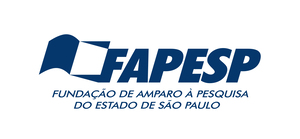Use este identificador para citar ou acessar este item:
https://repositorio.ufscar.br/handle/ufscar/15576| DOI: | https://doi.org/10.3389/fcvm.2021.772650 |
| Título: | Can non-invasive ventilation modulate cerebral, respiratory, and peripheral muscle oxygenation during high-intensity exercise in patients with COPD-HF? |
| Assunto: | Blood flow muscle;Heart failure;COPD;Cardiovascular physiology;Oxygen consumption |
| Descrição: | Aim: To evaluate the effect of non-invasive positive pressure ventilation (NIPPV) on (1) metabolic, ventilatory, and hemodynamic responses; and (2) cerebral (Cox), respiratory, and peripheral oxygenation when compared with SHAM ventilation during the high-intensity exercise in patients with coexisting chronic obstructive pulmonary disease (COPD) and heart failure (HF). Methods and Results: On separate days, patients performed incremental cardiopulmonary exercise testing and two constant-work rate tests receiving NIPPV or controlled ventilation (SHAM) (the bilevel mode—Astral 150) in random order until the limit of tolerance (Tlim). During exercise, oxyhemoglobin (OxyHb+Mb) and deoxyhemoglobin (DeoxyHb+Mb) were assessed using near-infrared spectroscopy (Oxymon, Artinis Medical Systems, Einsteinweg, The Netherlands). NIPPV associated with high-intensity exercise caused a significant increase in exercise tolerance, peak oxygen consumption (V⋅O2 in mlO2·kg−1·min−1), minute ventilation peak (V⋅E in ml/min), peak peripheral oxygen saturation (SpO2, %), and lactate/tlim (mmol/s) when compared with SHAM ventilation. In cerebral, respiratory, and peripheral muscles, NIPPV resulted in a lower drop in OxyHb+Mb (p < 0.05) and an improved deoxygenation response DeoxyHb+Mb (p < 0.05) from the half of the test (60% of Tlim) when compared with SHAM ventilation. Conclusion: Non-invasive positive pressure ventilation during constant work-rate exercise led to providing the respiratory muscle unloading with greater oxygen supply to the peripheral muscles, reducing muscle fatigue, and sustaining longer exercise time in patients with COPD-HF. |
| Autor(es): | Goulart, Cássia da Luz Caruso, Flávia Rossi Araújo, Adriana Sanches Garcia de Moura, Silvia Cristina Garcia de Catai, Aparecida Maria Agostoni, Piergiuseppe Mendes, Renata Gonçalves Arena, Ross Silva, Audrey Borghi |
| URI: | https://repositorio.ufscar.br/handle/ufscar/15576 |
| Outros identificadores: | https://doi.org/10.3389/fcvm.2021.772650 |
| Fomento: | Conselho Nacional de Desenvolvimento Científico e Tecnológico (CNPq) Coordenação de Aperfeiçoamento de Pessoal de Nível Superior (CAPES) Fundação de Amparo à Pesquisa do Estado de São Paulo (FAPESP) |
| Número do Projeto: | Processo nº 2015/26501–1, Fundação de Amparo à Pesquisa do Estado de São Paulo (FAPESP) Código de Financiamento 001 - CAPES Processo nº 141803/2019-3 - Conselho Nacional de Desenvolvimento Científico e Tecnológico (CNPq) Processo nº 2018/03233-0, Fundação de Amparo à Pesquisa do Estado de São Paulo (FAPESP) Processo nº 2020/13465-5, Fundação de Amparo à Pesquisa do Estado de São Paulo (FAPESP) |
| Termo de uso: | Attribution-NonCommercial-NoDerivs 3.0 Brazil |
| Data: | |
| Data de Disponibilização: | 9-Fev-2022 |
| Formato: | |
| Tipo: | Dataset |
| Editora / Evento / Instituição: | Universidade Federal de São Carlos |
| Idioma : | |
| Aparece nas coleções: | Repositório dados - UFSCar |
Este item está licenciada sob uma Licença Creative Commons

